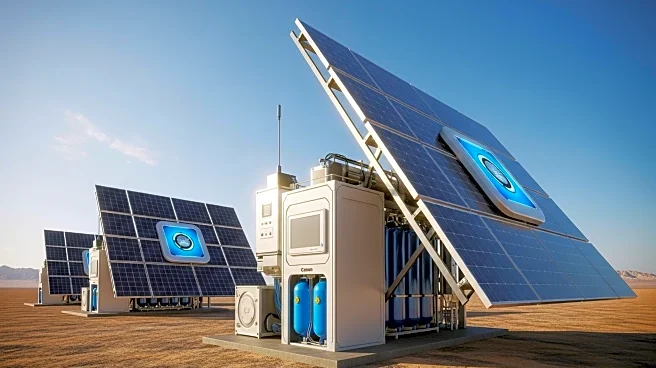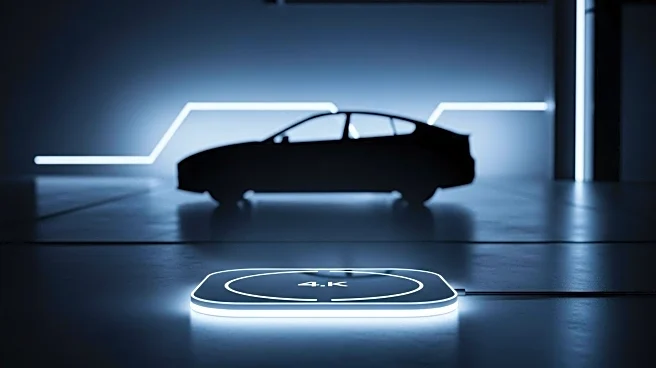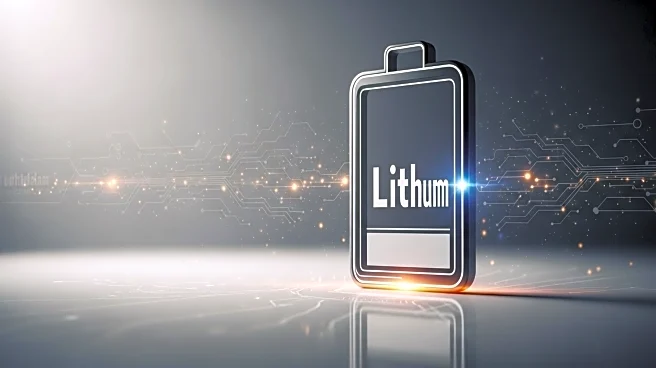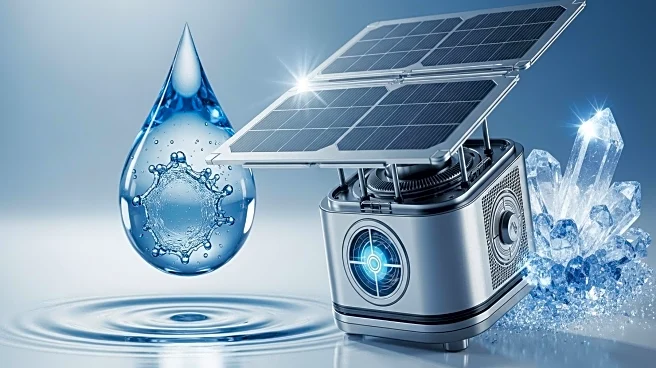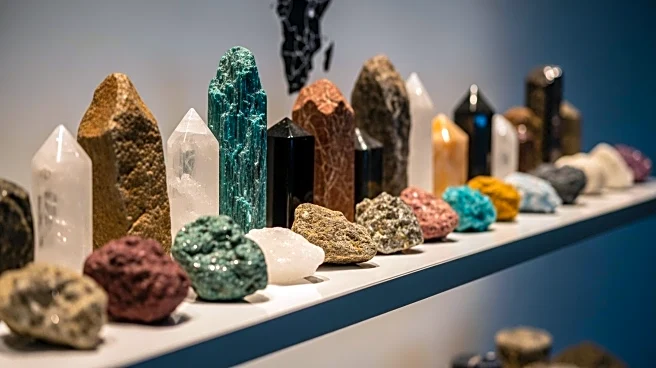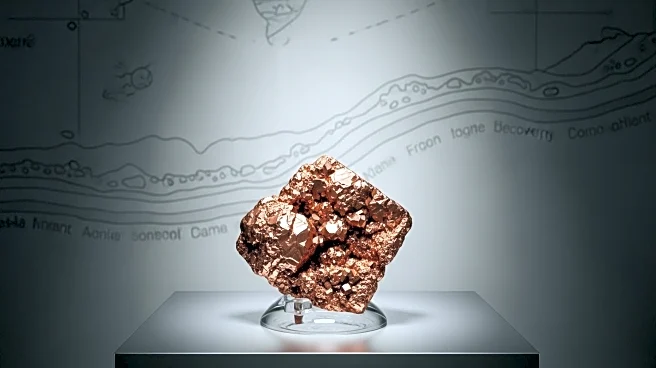What is the story about?
What's Happening?
A new experimental method for extracting lithium from brine and seawater has been developed, promising a more sustainable approach compared to traditional methods. This technique, created by Yu Tang and her team at Lanzhou University, utilizes a sun-powered system that not only extracts lithium but also produces fresh water. The process involves a manganese oxide layer that heats up under sunlight, causing water to evaporate and lithium ions to bind to the oxide. The water is then condensed and harvested, meeting World Health Organization drinking standards. This method could potentially reduce the environmental impact of lithium mining, which is crucial for battery production in electric vehicles and renewable energy systems.
Why It's Important?
The development of this sun-powered lithium extraction method is significant as it addresses the environmental concerns associated with traditional lithium mining, which often leads to water depletion and pollution. By producing fresh water alongside lithium, this method offers a dual benefit, potentially alleviating water scarcity issues in mining regions. This innovation could lead to more sustainable practices in the renewable energy sector, particularly in the production of batteries for electric vehicles, which are essential for reducing carbon emissions and combating climate change.
What's Next?
Further testing and scaling of this technology are necessary to determine its viability in real-world conditions. The stability of the manganese oxide material over multiple cycles is a concern that needs addressing. If successful, this method could be adopted widely, transforming lithium extraction practices and contributing to more sustainable resource management. Stakeholders in the renewable energy and automotive industries may show interest in supporting the development and implementation of this technology.
AI Generated Content
Do you find this article useful?
